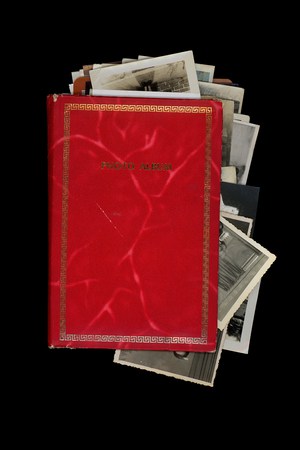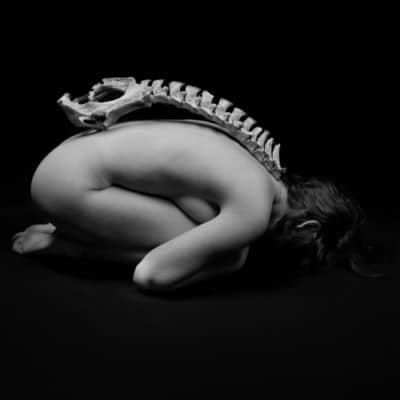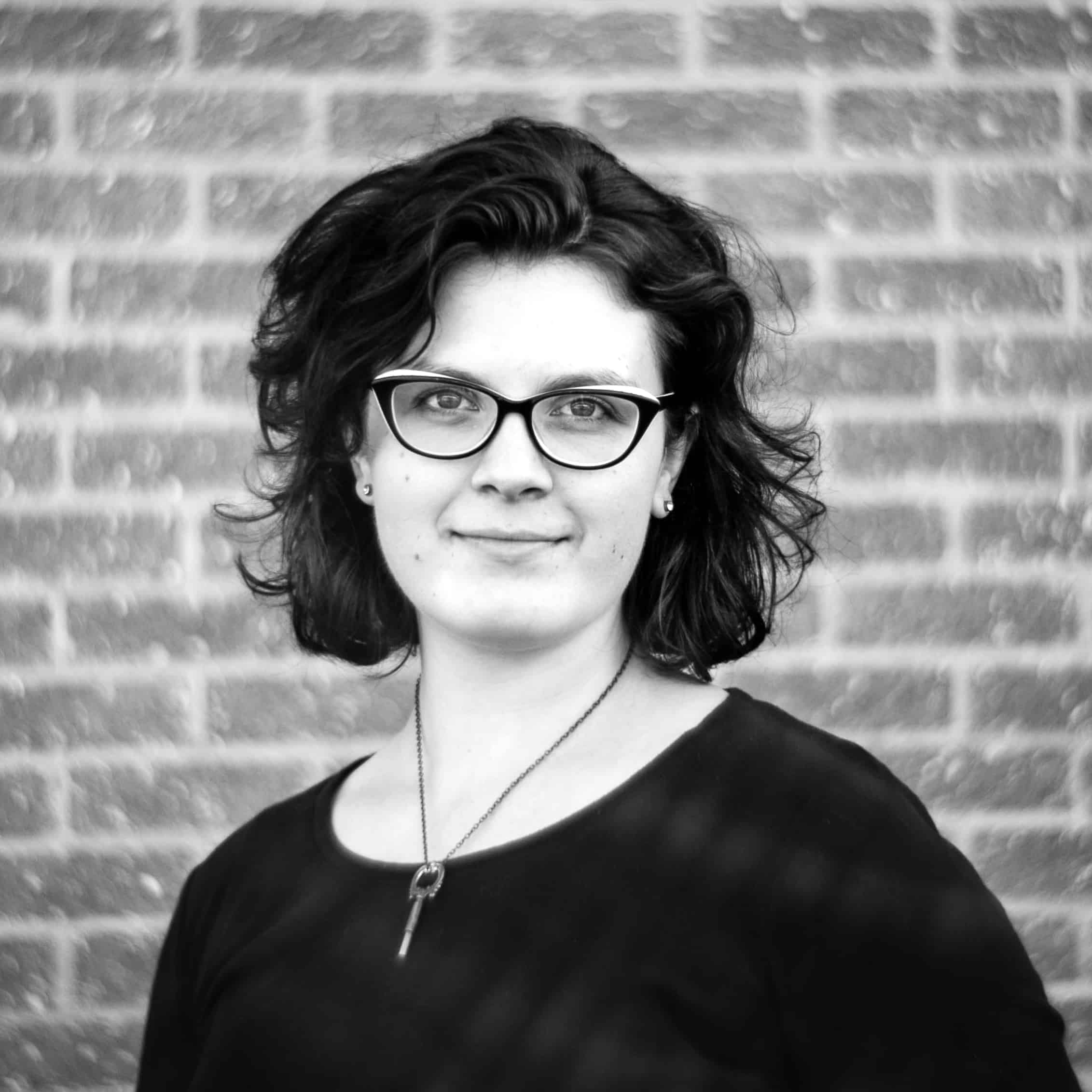Katherine Nakaska is one of the twenty-three long-listed artists vying for the 2019 New Generation Photography Award, presented by the Canadian Photography Institute of the National Gallery of Canada and Scotiabank. Her work explores notions of identity by examining ancestral histories, landscapes, and stereotypes of femininity.
We chatted with her this week to learn more.
SDTC: You’re from Halifax originally. How has being from the east coast shaped your work?
KN: Nova Scotia will always be home for me, and I share a great sentiment with the landscape and people. My grandmother immigrated there from Scotland and started a family in the late fifties. My mother lives there, and they have both been significant inspirations for my work. My mom is a wonderfully sentimental person who sees the good in everyone, puts others before herself, and who I believe is a true reflection of what it means to be from the east coast.
A great sense of humour, incredibly hard-working, hospitable, generous, and fiercely independent: these values have influenced my art practice and have made me recognize the importance of remembering where we came from and how it shapes us as individuals. A lot of my work is sentimental and emotional, which is stereotypically perceived as a weakness in our society. My upbringing and education have taught me that sharing my sentiments requires great personal strength, which allows me to find a deeper connection with people who share my values. The NSCAD community, especially the faculty, technicians, and gallery staff, share those values and have become a family that has supported my professional artistic growth.

Photo: Katherine A. Nakaska
Your work deals with objects, sentimentality, and how photographs link us to our past. Why do you think we are so prone to forge our identities to these objects that link us to the past?
Everyone harbours sentiments with their personal objects. I feel that we are prone to forge our identities by our family ancestry and in many cases, our family leaves behind precious heirlooms that may be easily lost but intentionally kept safe, including pictures. Objects evoke sentiment, and physical photographs are the most succinct links to our past. I’m afraid we are losing touch with those sentiments since photographs are so ubiquitous and seldom leave a screen to be printed.
I love old things. Whenever I hold an old photo or heirloom, I imagine the person who made it or someone who once held that same item with a particular intention, and it brings me closer to them and their memory. It’s even more sentimental if that object has a personal connection. The history of that object itself intrigues me: how creases were formed, if it is scratched or worn out, or if inscriptions are etched on it. Every object has a trace of time. A photograph is a mark of time, with the ability to manifest a memory for the viewer, and created with an intention to preserve and share that moment. Everyone has an object that evokes a significant memory from their past.
Of all the series you’ve worked on, what is your favourite photograph and why?
That’s a tough question. It’s hard to choose because I have favourite photographs for different reasons. From my series Tuché, the red photo album is my favourite. The album holds many photos within it, each telling their own story, and each chosen to be kept in this place for a reason. I could go on a hundred tangents about each individual photograph tucked into that album. When I was in Scotland and my great aunt Josie showed it to me for the first time, I knew immediately how important it was for so many people in my family, and it was something to celebrate and cherish. From my series Heirlooms, my favourite image is probably the flower crown, since I wore it when I was a flower girl at my uncle’s wedding when I was six years old. I found it in a box of school projects from my childhood that included finger paintings, holiday crafts, and handwriting lessons. It was wedged in between papers and the flowers were still bright purple after twenty years.

Photo: Katherine A. Nakaska
What drew you initially to the medium of photography, and how has your relationship to this medium changed over time?
I try to keep up to date with camera technology because I’m a bit of a techie. I have at least twenty cameras, both film and digital, and countless accessories.
My initial interest in fine art photography was purely technological. I grew up just as digital cameras were becoming more accessible, while analog technologies were just starting to fall into obsolescence. As a teenager, everyone took pictures, and I carried a point-and-shoot camera wherever I went. I quickly outgrew it and enrolled in an analog photography summer camp at NSCAD, wanting to learn the basics. When they handed me a Pentax K1000, I immediately fell in love with the darkroom and equipment. Processing film by hand and printing it remains a magical process, mixing chemicals and seeing a photograph appear from a blank sheet of paper. Shortly after the course, I inherited my father’s Canon t70 film camera and lenses. Back then you could get a roll of colour film processed and scanned at Wal-Mart for $10. They stopped processing film about five years ago.
The summer camp inspired me to pursue my BFA at NSCAD, where I quickly majored in photography and became enthralled with the conceptual side of image-making. Professor Robert Bean teaches two undergraduate seminars called Questions of Obsolescence and Realism and Truth. It was those Friday morning seminars that opened my mind to the possibilities of image-making, photographs as more than just images but an indexical mark of our identities as well. Roland Barthes Camera Obscura and Susan Sontag’s On Photography were my first significant resources, which I constantly revisit. My copies are now riddled with Post-its. This was when I became serious about developing more in-depth conceptual backstories to the images I was creating with as much importance as creating the image itself. I no longer saw the medium as two-dimensional.
I began working with a scanner, first as just a way to digitize old albums, but later to render objects with great detail. The use of the scanner inspired my ongoing series, Heirlooms. In my last year of school, I was granted the Roloff Beny Photography Scholarship, which allowed me to travel to Scotland to create the work based on my maternal ancestry, entitled Tuché. When I returned to Nova Scotia, I began teaching the Black and White Film Photography class through NSCAD Extended Studies, the same course I took when I was in high-school. Through teaching this course I continued working hands-on with film and meeting all sorts of enthusiasts in my the community, outside of the university bubble. I still shoot film but often use a digital camera and my phone camera for snapshots.
What project are you currently working on that you’re excited about?
Currently, I am working on a piece about a house that was built by my grand aunt and her husband in Bible Hill, Nova Scotia, in the late 1970s. I spent a lot of time there when I was little, and my aunt loved to take polaroids. After finding a collection of them last year, I instinctively began to organize them and document them. The piece depicts nine polaroids taken from the same angle while her house was under construction. A few of them have dates written on the front and were taken in different seasons, which helped to arrange them chronologically. The image itself is nearly complete, but I am in the process of writing and researching its context.



 Follow Us On Instagram
Follow Us On Instagram
